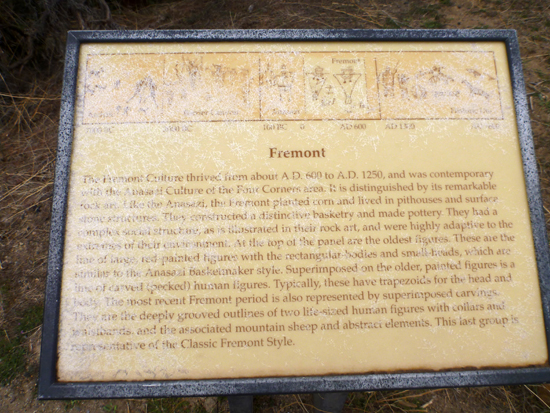
Interpretive Sign - Fremont
The Fremont Culture thrived from about A.D. 600 to A.D. 1250, and was contemporary with the Anasazi Culture of the Four Corners area. It is distinguished by its remarkable rock art. Like the Anasazi, the Fremont planted corn and lived in pithouses and surface stone structures. They constructed a distinctive basketry and made pottery. They had a complex social structure, as is illustrated in their rock art, and were highly adaptive to the extremes of their environment. At the top of the panel are the oldest figures. These are the line of large, red-painted figures with the rectangular bodies and small heads, which are similar to the Anasazi Basketmaker style. Superimposed on the older, painted figures is a line of carved (pecked) human figures. Typically, these have trapezoids for the head and body. The most recent Fremont period is also represented by superimposed carvings. They are deeply grooved outlines of two life-sized human figures with collars and waistbands and the associated mountain sheep and abstract elements. This last group is representative of the Classic Fremont Style.